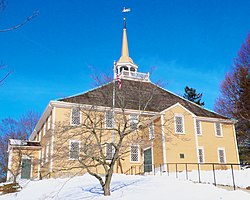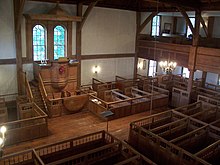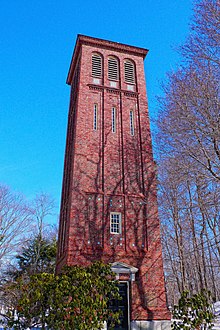
Cohasset is a town in Norfolk County, Massachusetts, United States. As of the 2020 census the population was 8,381.
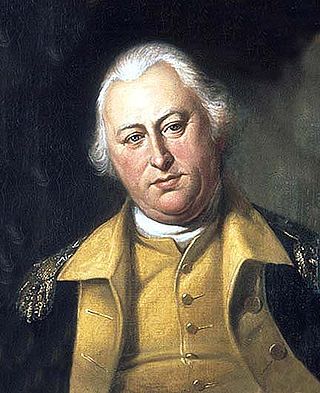
Benjamin Lincoln was an American army officer. He served as a major general in the Continental Army during the American Revolutionary War. Lincoln was involved in three major surrenders during the war: his participation in the Battles of Saratoga contributed to John Burgoyne's surrender of a British army, he oversaw the largest American surrender of the war at the 1780 siege of Charleston, and, as George Washington's second in command, he formally accepted the British surrender at Yorktown.
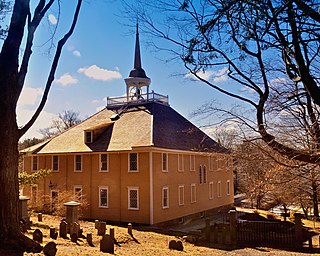
Hingham is a town in metropolitan Greater Boston on the South Shore of the U.S. state of Massachusetts in northern Plymouth County. At the 2020 census, the population was 24,284. Hingham is known for its colonial history and location on Boston Harbor. The town was named after Hingham, Norfolk, England, and was first settled by English colonists in 1633.
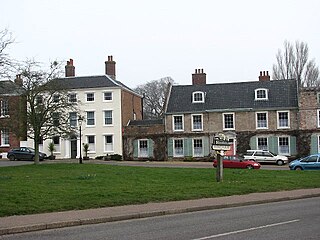
Hingham is a market town and civil parish in mid-Norfolk, England. The civil parish covers an area of 14.98 km2 (5.78 sq mi) and had a population of 2,078 in 944 households at the time of the 2001 census, increasing to 2,367 at the 2011 census.

First Parish Dorchester is a Unitarian Universalist church in Dorchester, Massachusetts. The congregation was founded by English Puritans who initially saw themselves as reformers rather than separatists, but increasingly intolerable conditions in England and at the urging of Reverend John White of Dorchester, Dorset, they emigrated to New England. On March 20, 1630 as they set sail from Plymouth, England on the Mary and John, the congregation wrote its founding church covenant. Nearly all of the 140 ship passengers originated in the West Country counties of Somerset, Dorset and Devon. In late May, the ship landed first at what became called Hull, Massachusetts, and then in June at a place called "Mattapan" by the indigenous people including the Massachusett and Wampanoag. The Puritans named their new home "Dorchester Plantation."
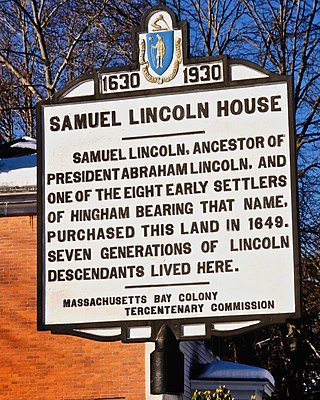
Samuel Lincoln was an Englishman and progenitor of many notable United States political figures, including his 4th-great-grandson, President Abraham Lincoln, Maine governor Enoch Lincoln, and Levi Lincoln Sr. and Levi Lincoln Jr., both of whom served as Massachusetts Representatives, Governor and Lieutenant Governor. Because of Samuel Lincoln's descendants, his fortuitous arrival in the Massachusetts Bay Colony, and the fact that his ancestry is known for several generations, he is considered the father of the most prominent branch of Lincolns in the United States.

The Cushing Homestead is a historic house at 210 East Street in Hingham, Massachusetts. The home is a 2+1⁄2-story rear saltbox, and has traces of both 17th-century English style as well as later 18th-century Georgian. The two rooms that originally made up the house look much today as they likely did before the house was later enlarged.

The Meetinghouse Common District is a historic district on Summer, South Common, and Main Streets in Lynnfield, Massachusetts surrounding the town common.
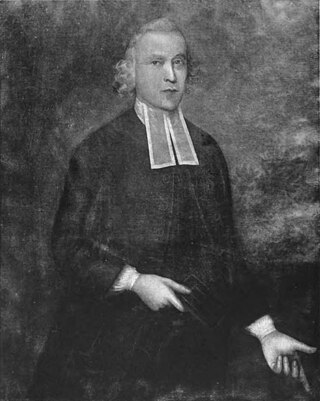
Rev. Dudley Leavitt (1720–1762) was a Congregational minister born in New Hampshire, educated at Harvard College, who led a splinter group from the First Church in Salem, Massachusetts, during a wave of religious ferment nearly a decade before the Great Awakening. Following Leavitt's death at age 42, his congregation elected to christen itself 'The Church of Which the Rev. Dudley Leavitt was late Pastor' after the charismatic preacher. Leavitt Street in Salem is named for the early minister.

Lieut. Samuel Leavitt (1641–1707) was an early colonial American settler of Exeter, New Hampshire, one of the four original towns in the colony of New Hampshire, where Leavitt later served as a delegate to the General Court as well as Lieutenant in the New Hampshire Militia, and subsequently as member of the New Hampshire House of Representatives. The recipient of large grants of land in Rockingham County, Leavitt held positions of authority within the colonial province.

Elisha Leavitt (1714–1790) was a Hingham, Massachusetts, Loyalist landowner who owned several islands in Boston Harbor. During the Siege of Boston in 1775, Leavitt encouraged British forces to use one of his islands to gather hay for their horses, triggering one of the first skirmishes of the American War of Independence, The Battle of Grape Island. This encounter followed the battles at Lexington and Concord by a month, and preceded the Battle of Bunker Hill by less than a month.
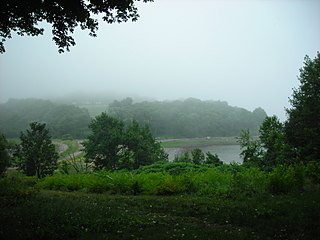
Moses Leavitt (1650–1730) was an early settler of Exeter, New Hampshire, in what is now the United States, where he worked as a surveyor. Later he became a large landowner, and served as selectman, and as a Deputy and later Moderator of the New Hampshire General Court from Exeter. He was the ancestor of several notable Leavitt descendants, including the well-known Meredith, New Hampshire, teacher and almanac maker Dudley Leavitt.

Thomas Leavitt (1616–1696) was an English Puritan who was one of the earliest permanent settlers of the Province of New Hampshire. A farmer, Leavitt apparently followed Rev. John Wheelwright to his settlement of Exeter, New Hampshire. Leavitt later moved on to Hampton. He was seldom involved in town business, and was described by one writer as "a quiet, useful citizen." He was not remarkable, except insofar as those who crossed the Atlantic, swept by storms startling to Englishmen, to settle an unknown continent, peopled by tribes with which they were unfamiliar, were unremarkable.

Deacon John Leavitt (1608–1691) was a tailor, public officeholder, and founding deacon of Old Ship Church in Hingham, Plymouth County, Massachusetts, the only remaining 17th-century Puritan meeting house in America and the oldest church in continuous ecclesiastical use in the United States. Hingham's Leavitt Street is named for the early settler, whose descendants have lived in Hingham for centuries.
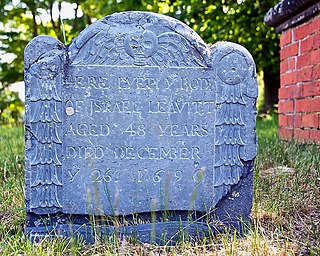
Private Joseph Leavitt (1757–1839) was an early settler of Maine, who moved to what was then the frontier of Massachusetts after serving three months in the Continental Army at the outbreak of the Revolutionary War, and then declaring that he was unable to bear arms in conflict. The conscientious objector declared that he would move to Maine and survey lands for grants to former soldiers. On account of his pacifist sentiments, 'Quaker Joe,' as he became known for the rest of his life, was awarded with a house lot next to the new Turner meetinghouse when it was eventually built.

Rev. Jonathan Leavitt (1731–1802) was an early New England Congregational minister, born in Connecticut, and subsequently the pastor of churches in New Hampshire and Massachusetts, both of which dismissed him from his posts. Several of Rev. Leavitt's descendants became among the most noted abolitionists of their day, even though he himself was dismissed from one pastorate for allegedly abusing his runaway slave, and from another for his Loyalist sentiments.

Josiah Leavitt (1744–1804) was an early Massachusetts physician and inventor. Possessed of an early love for mechanical movements and for music, Dr. Leavitt eventually gave up his medical practice and moved to Boston, where he became one of the earliest manufacturers of pipe organs in the United States.

The First Church in Windsor, Connecticut is the oldest Congregational church in Connecticut. Its origin can be traced back to 1630, when 140 men and women sailed out of Plymouth, England on the Mary & John. This was the first of 17 ships in the so-called Winthrop Fleet, bound for the Massachusetts Bay Colony. When they heard from the Indians about the fertile land along the Connecticut River in what is now called the Connecticut River Valley, a small contingent of settlers travelled southwest and established the first settlement in Connecticut at Windsor in 1633. Word soon spread that Windsor was a good place in which to settle: in 1635, the congregation of the First Church departed from their homes in Dorchester, Massachusetts to relocate to Connecticut.

Thomas Loring was an early settler of Hingham and Hull, Massachusetts. He was present at some of the key moments in the earliest history of Hingham, Massachusetts. But later "[t]he large Loring families were prominent in the town [of Hull], and remained into the 20th century." As early as 1893 he was recognized as "the progenitor of the families bearing this surname by birth in eastern Mass., and prob. throughout New Eng." His descendants include individuals on both sides of the American Revolution, the US Civil War, and today live across North America, Spain, England and Australia.
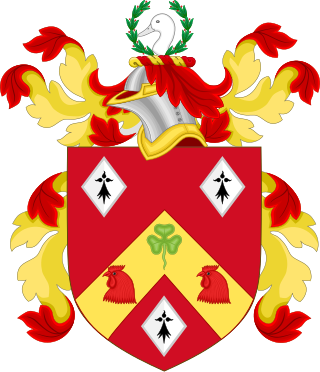
Col. Samuel Thaxter (1665-1740), of Hingham, Massachusetts, was one of the most prominent and influential citizens in Plymouth, New England. He was a member of the commission to settle the boundary between Massachusetts and Rhode Island in 1719. He commanded the Ancient and Honorable Artillery Company of Massachusetts in 1728. His son Samuel Thaxter Junior (1695-1732) married Mary Hawke (1711-1798) who was the mother of John Hancock.
